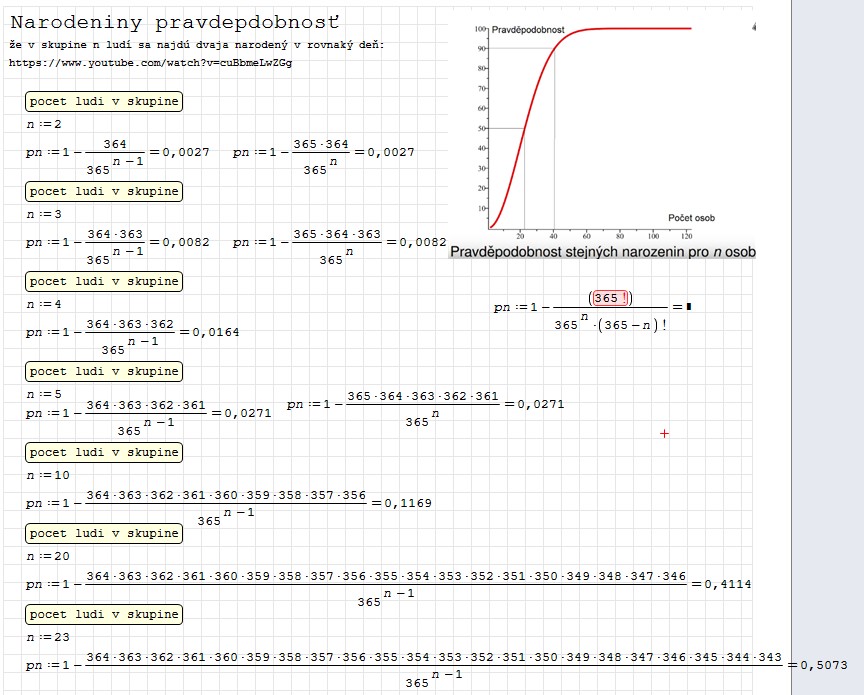Pravdepodobnosť, že v skupine sa nachádzajú dve osoby s rovnakým dátumom narodenia

Mirek Rokyta otvoril tento problém vo videu https://youtu.be/cuBbmeLwZGg Riešenie: Pm = 1-365!/365^x/(365-x)! pocet osôb v skupine pravdepodobnosť Pm 2 0,003 3 0,008 4 0,016 5 0,027 6 0,040 7 0,056 8 0,074 9 0,095 10 0,117 11 0,141 12 0,167 13 0,194 14 0,223 15 0,253 16 0,284 17 0,315 18 0,347 19 0,379 20 0,411 21 0,444 22 0,476 23 0,507 ... 75 0,9997

